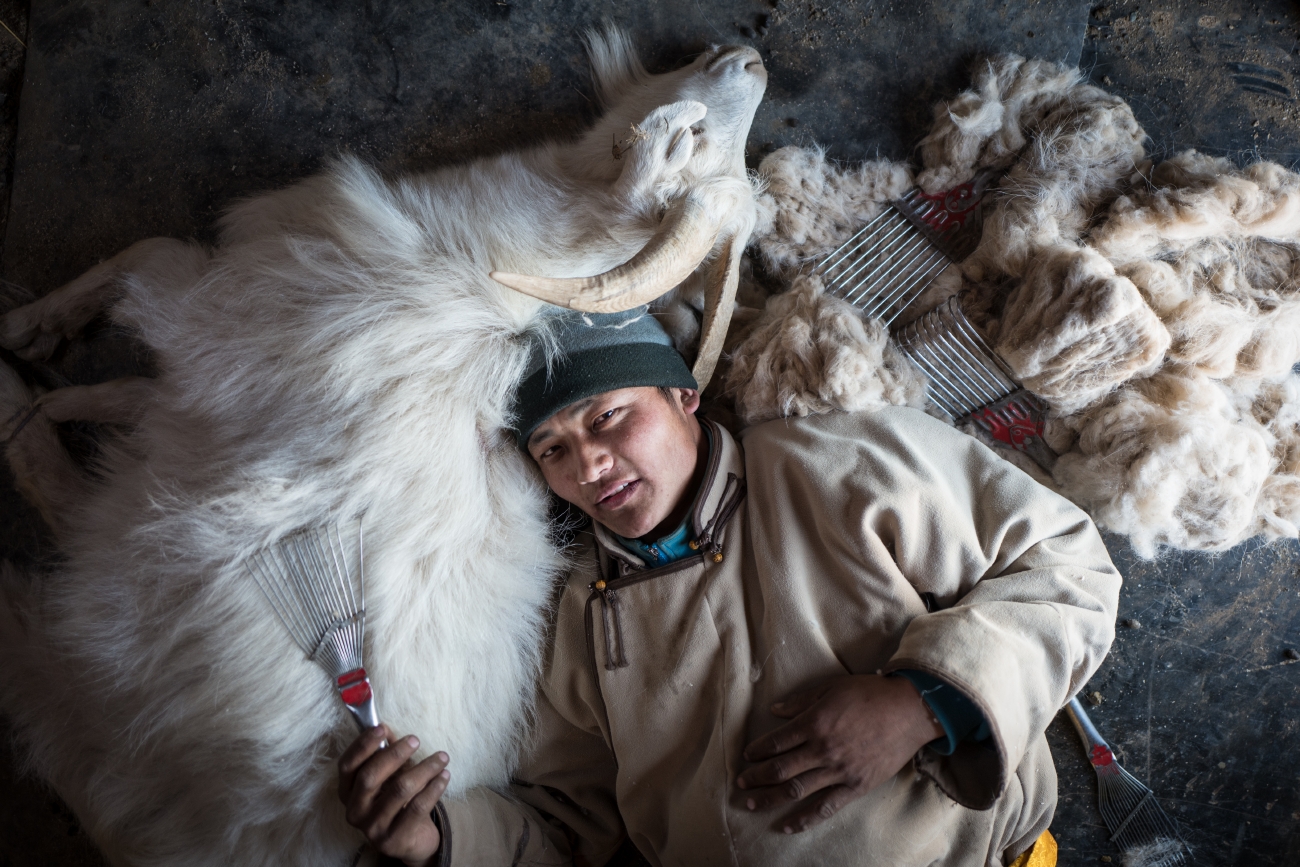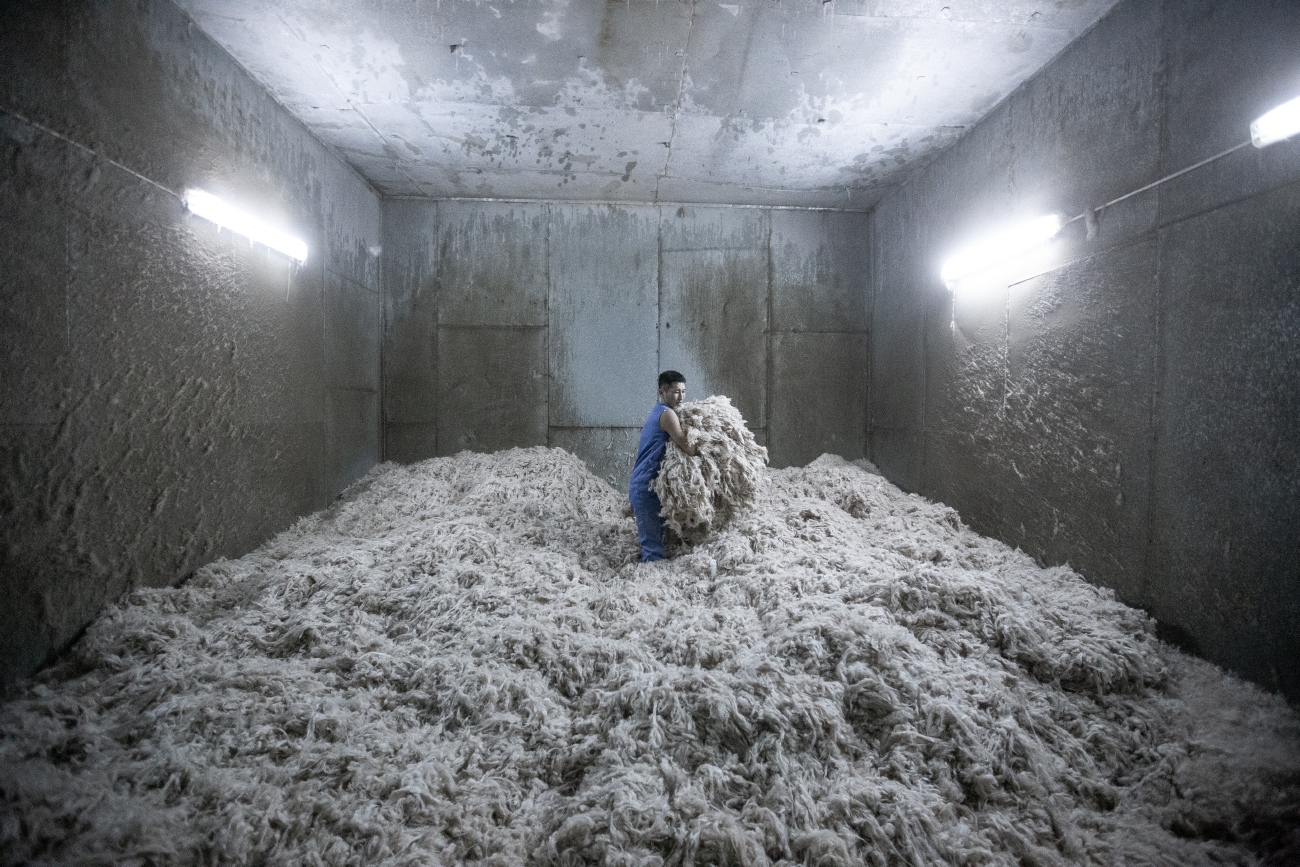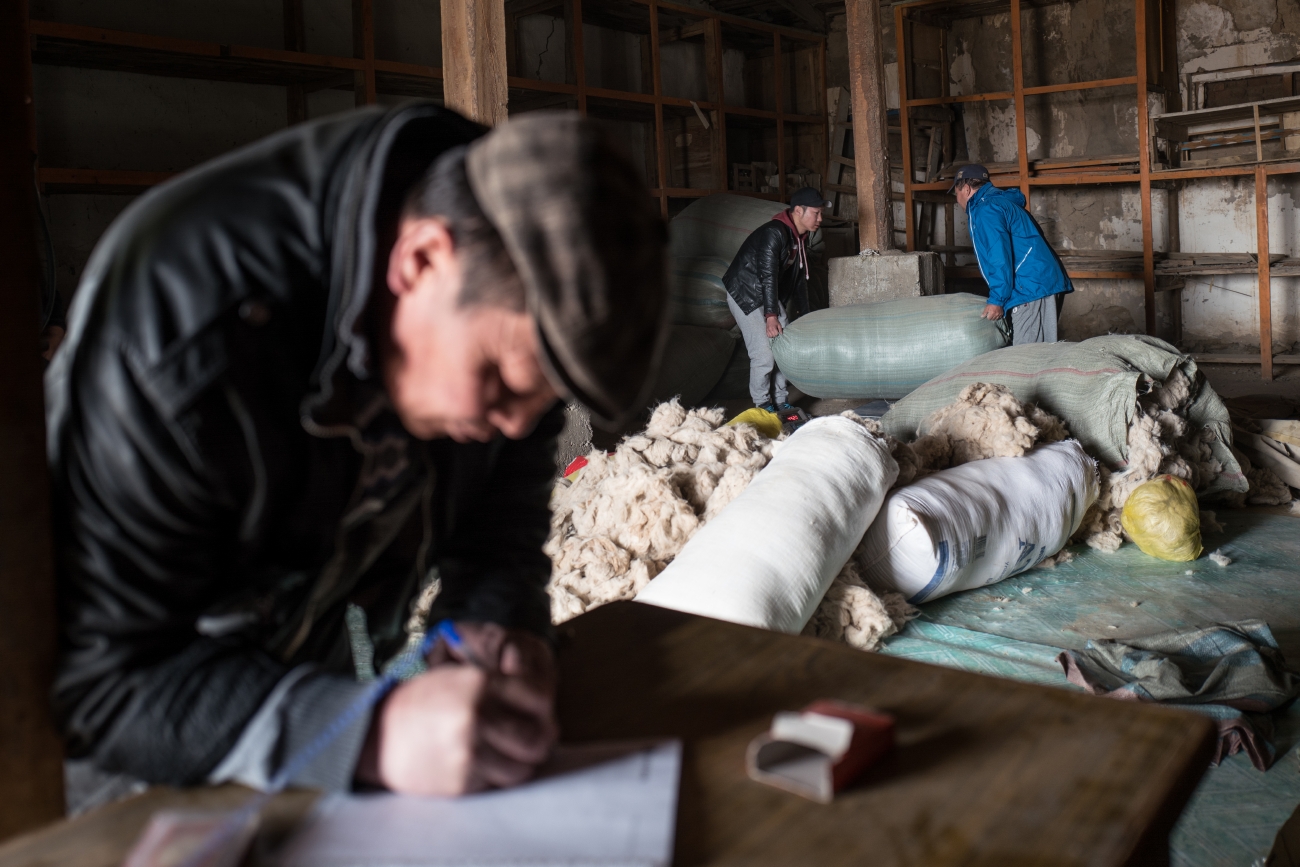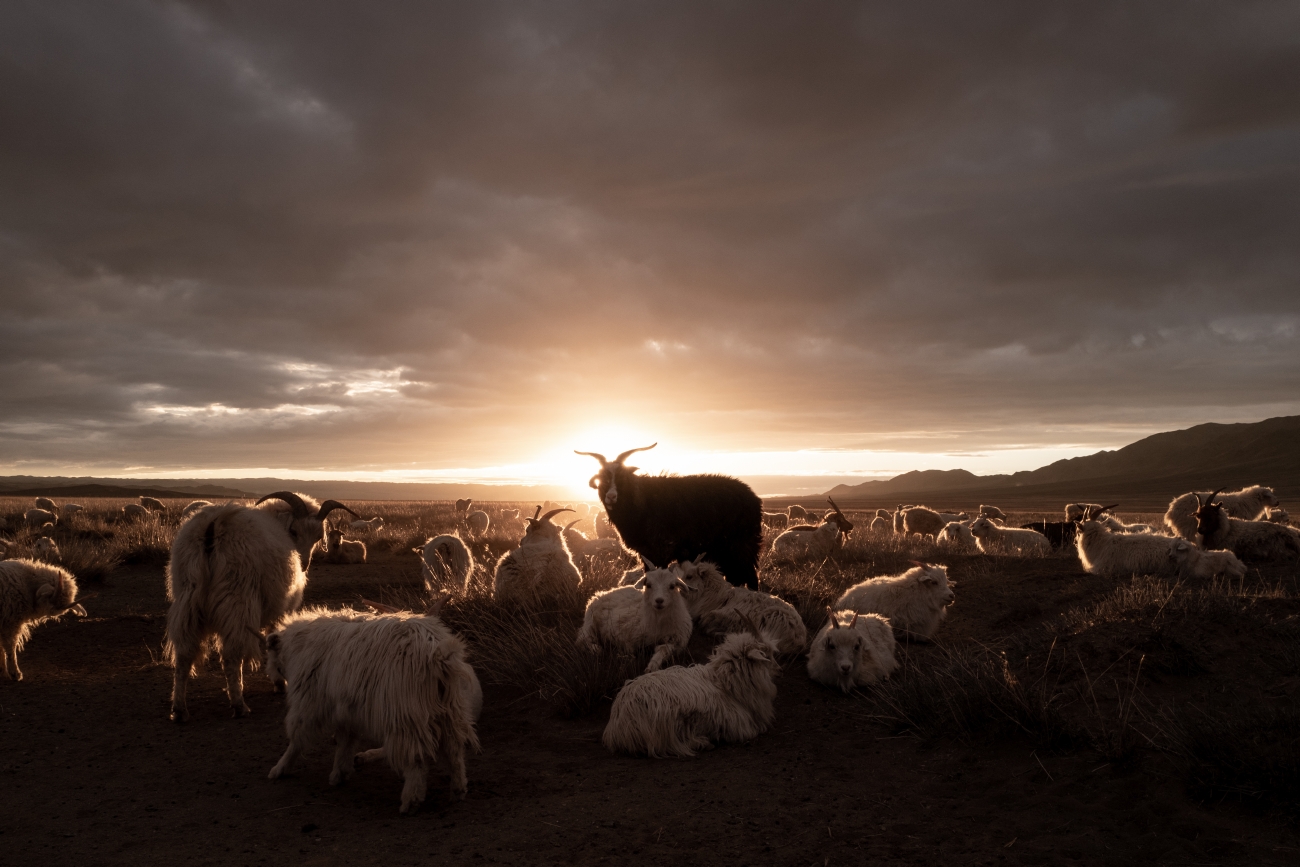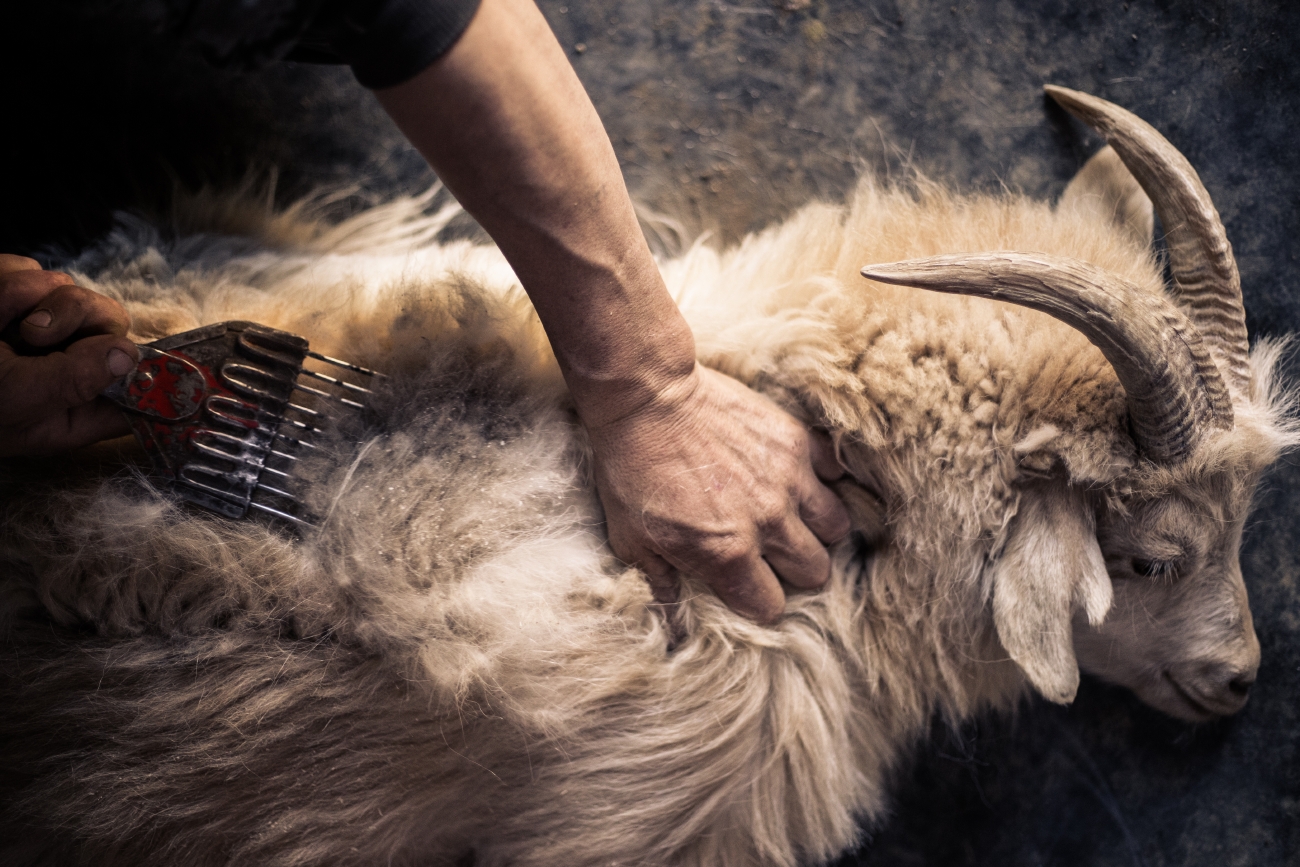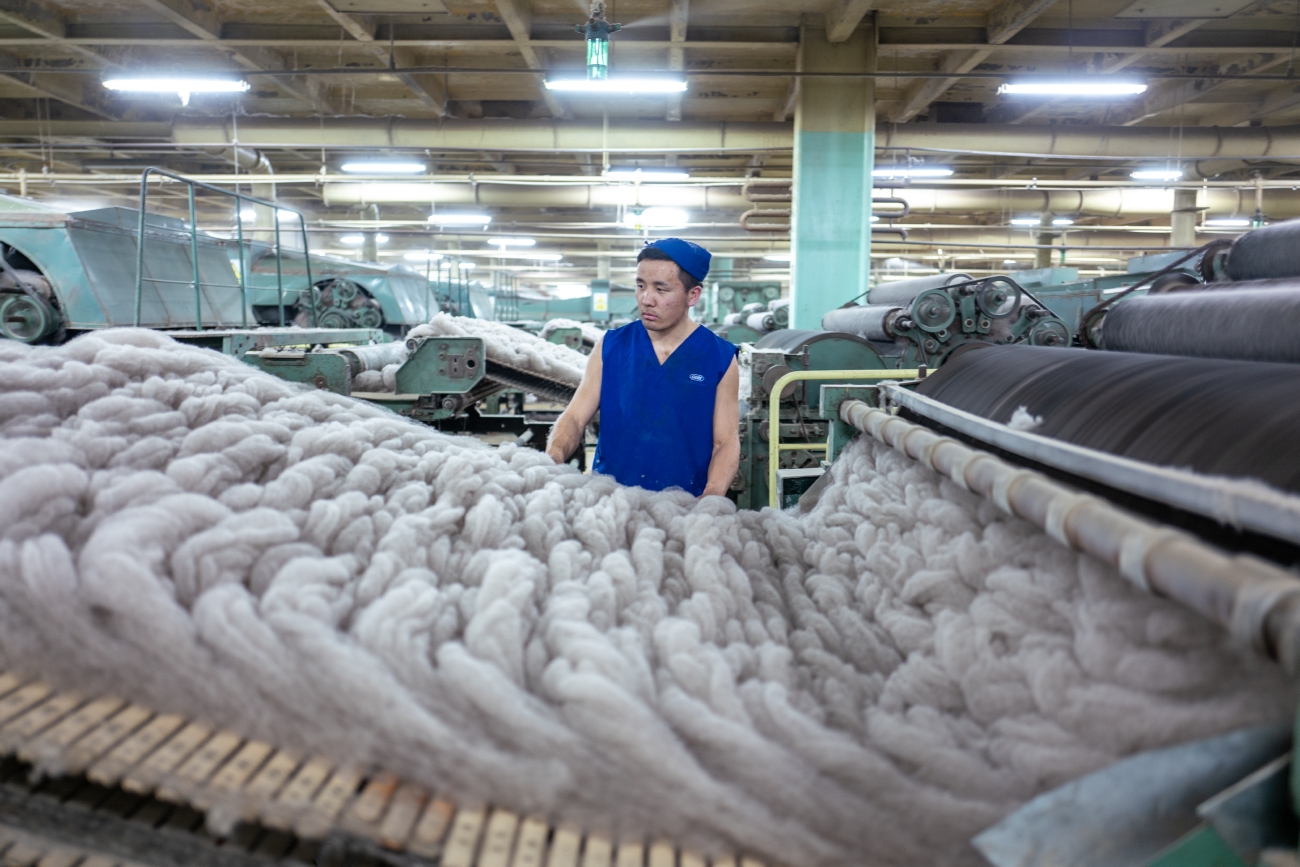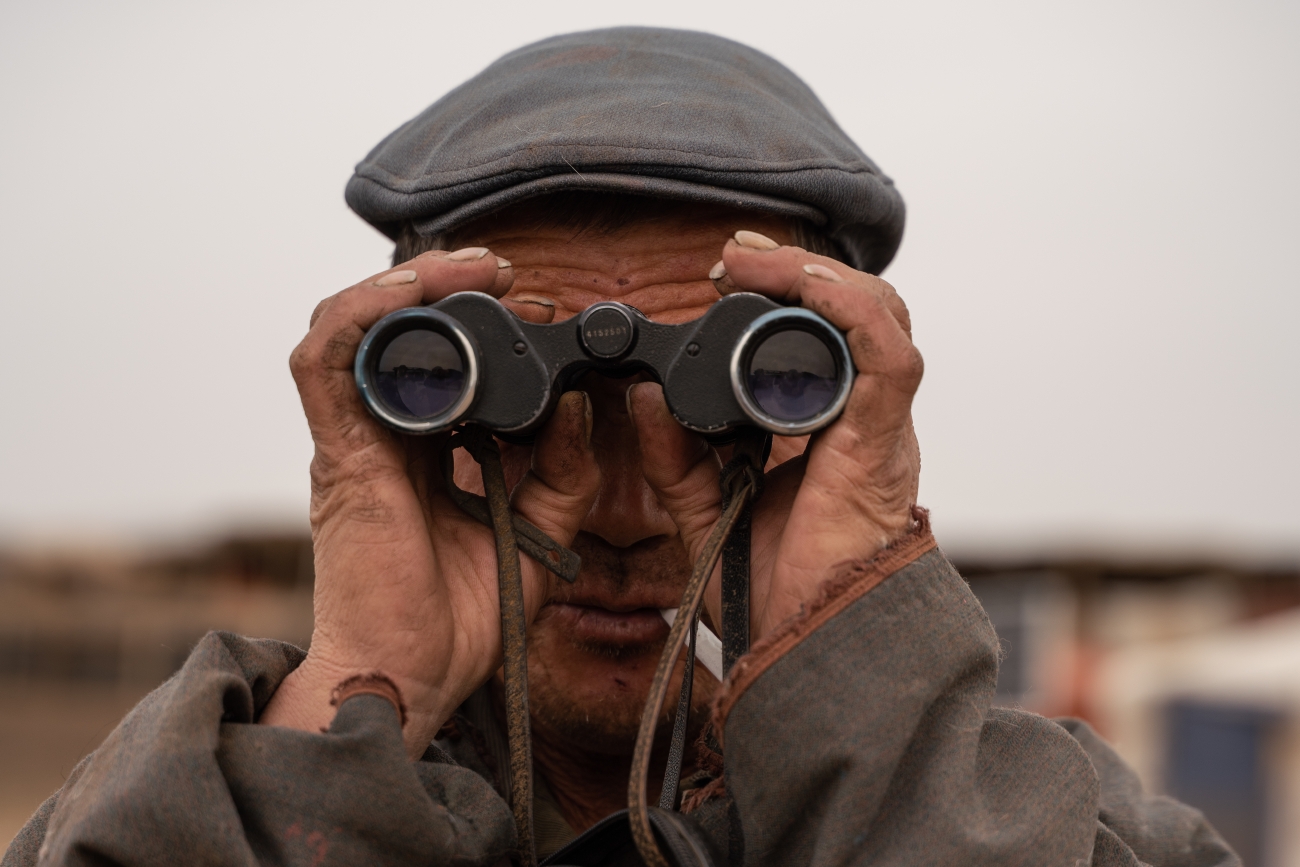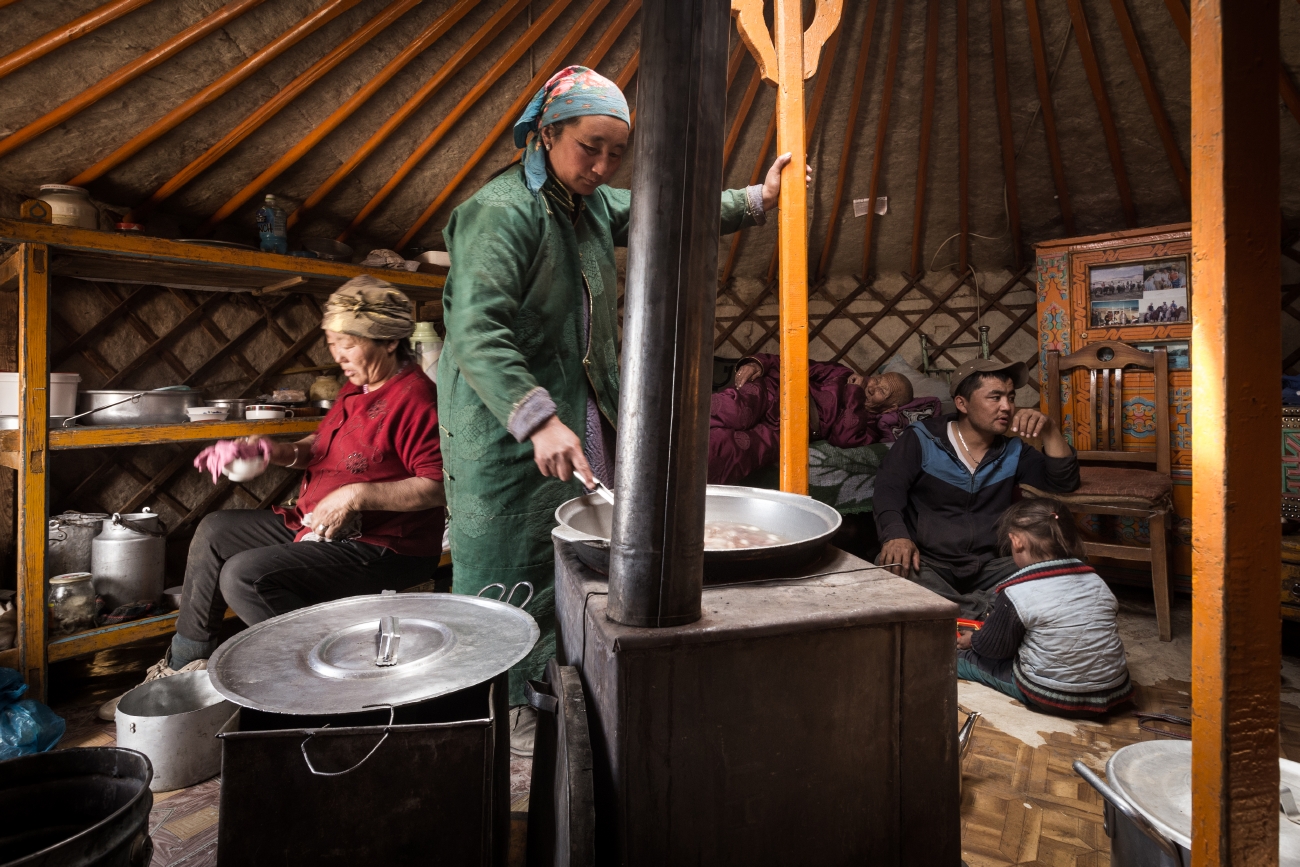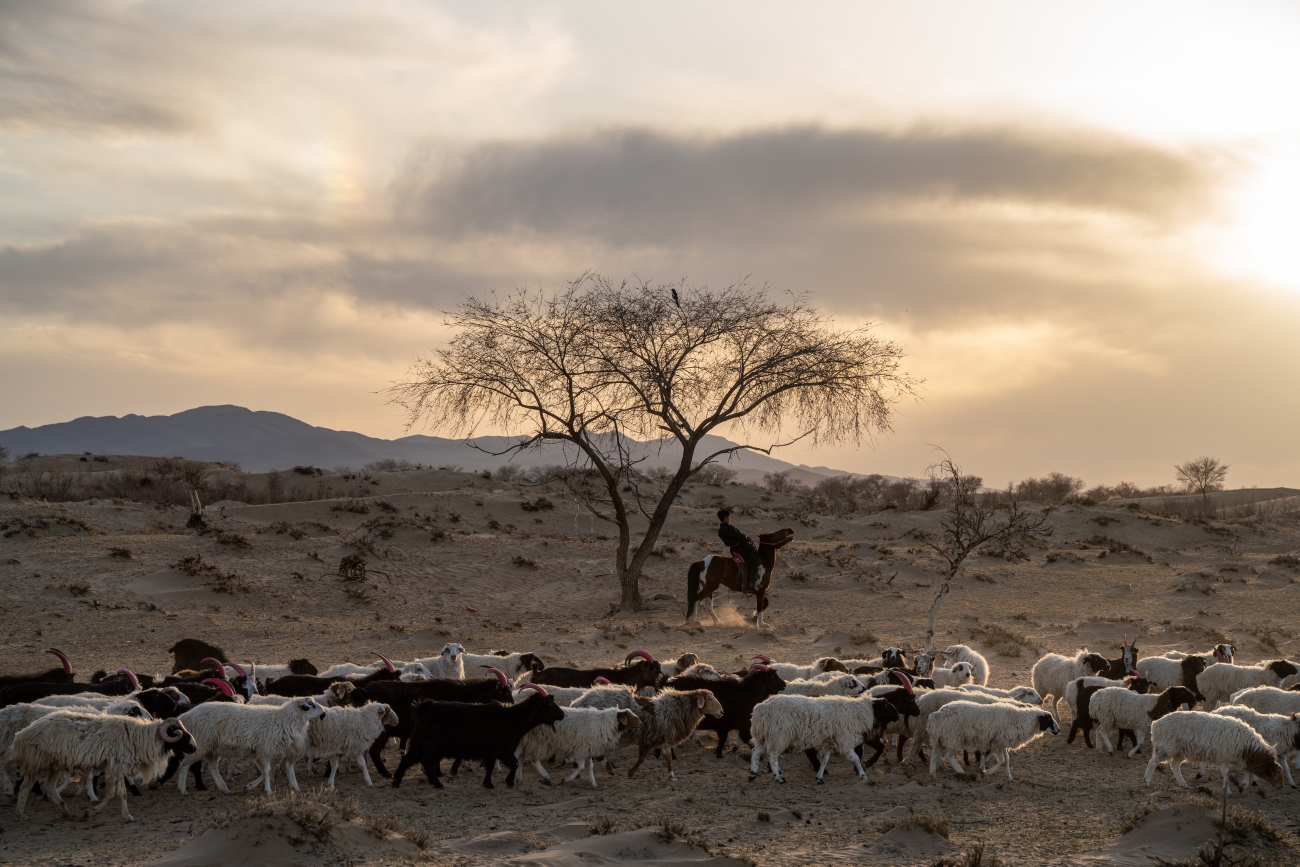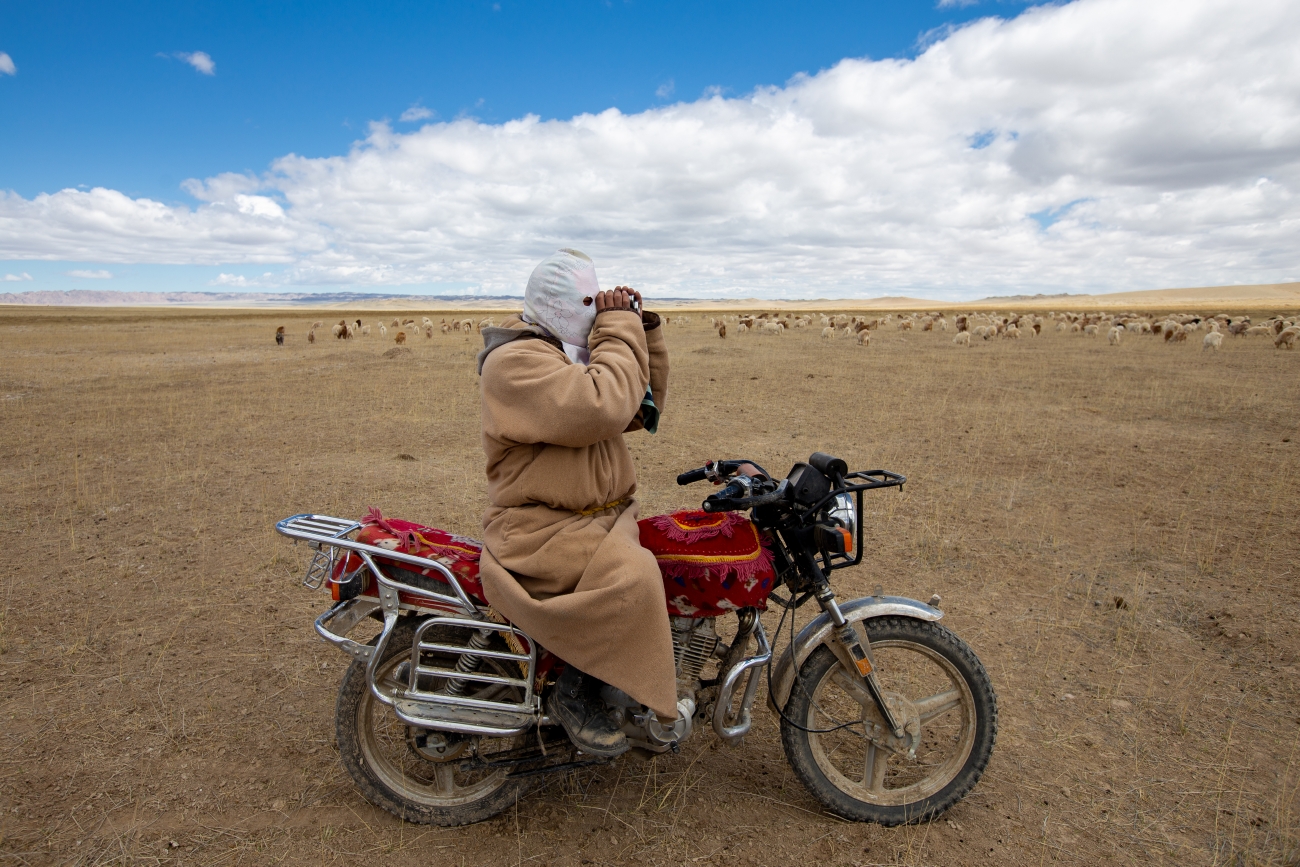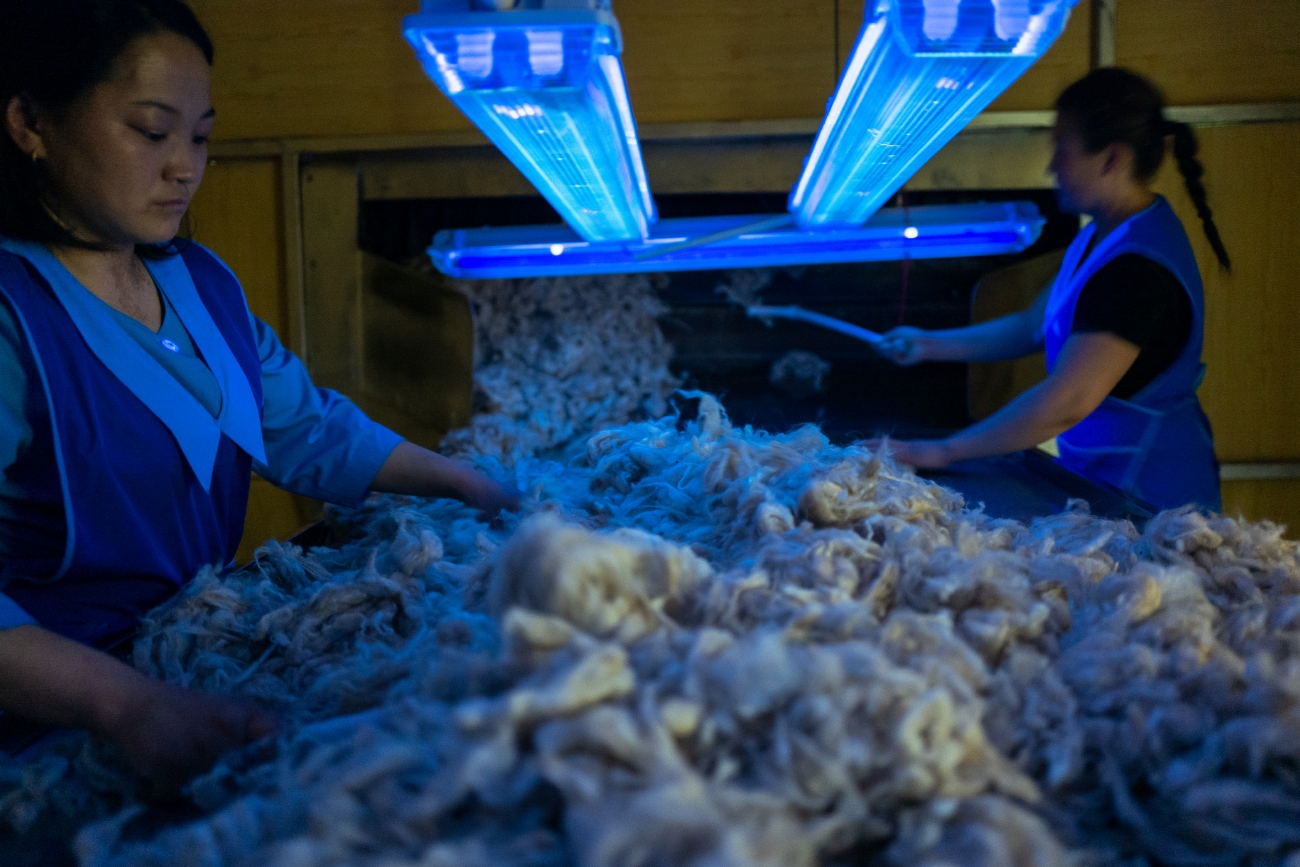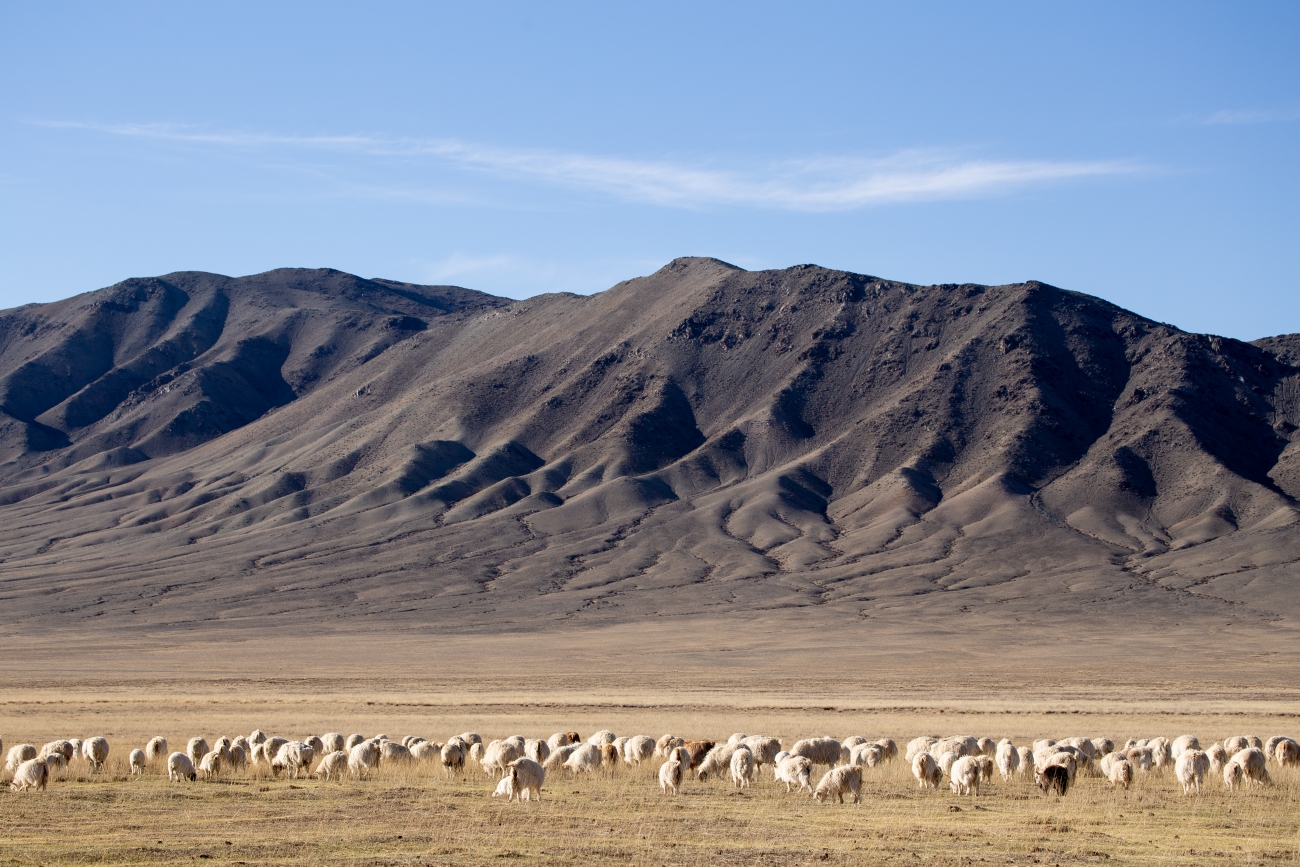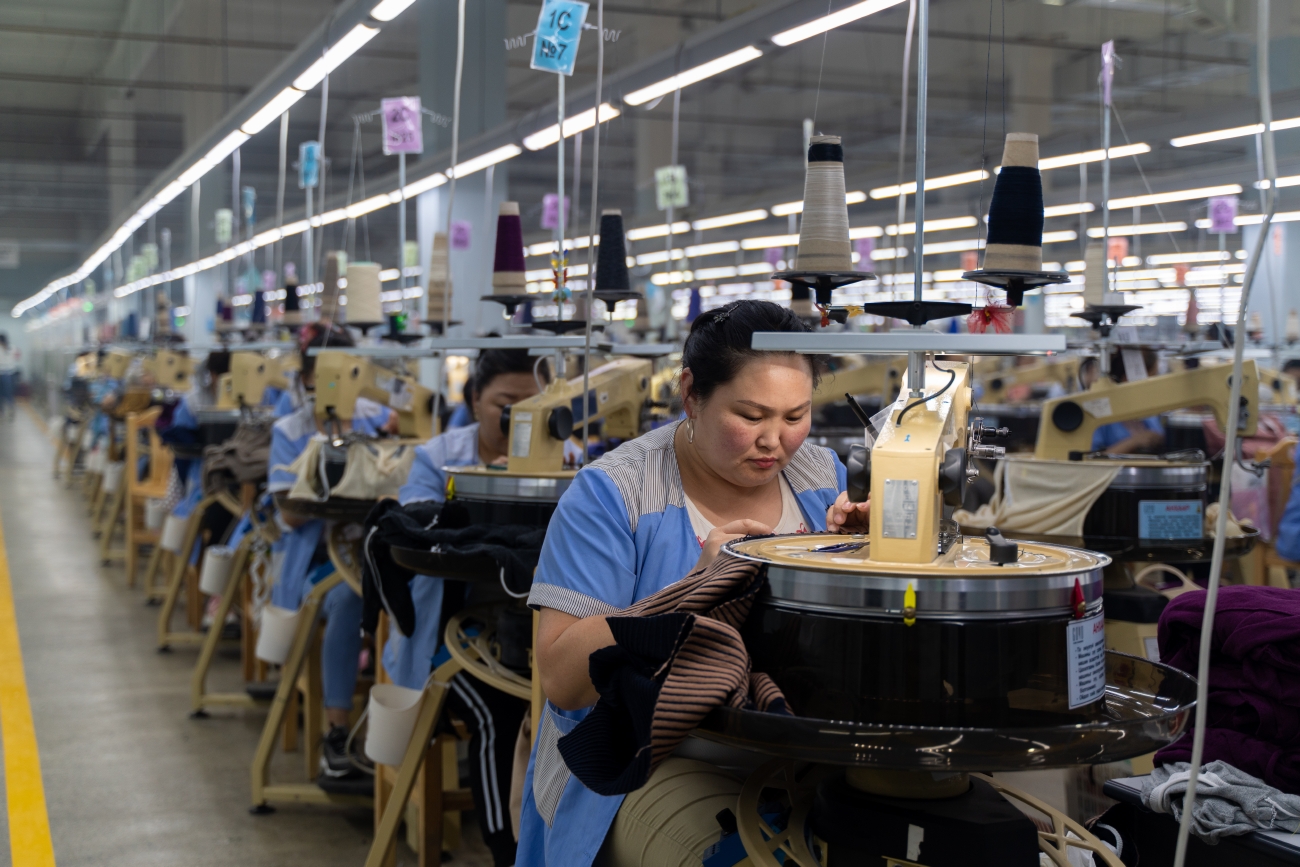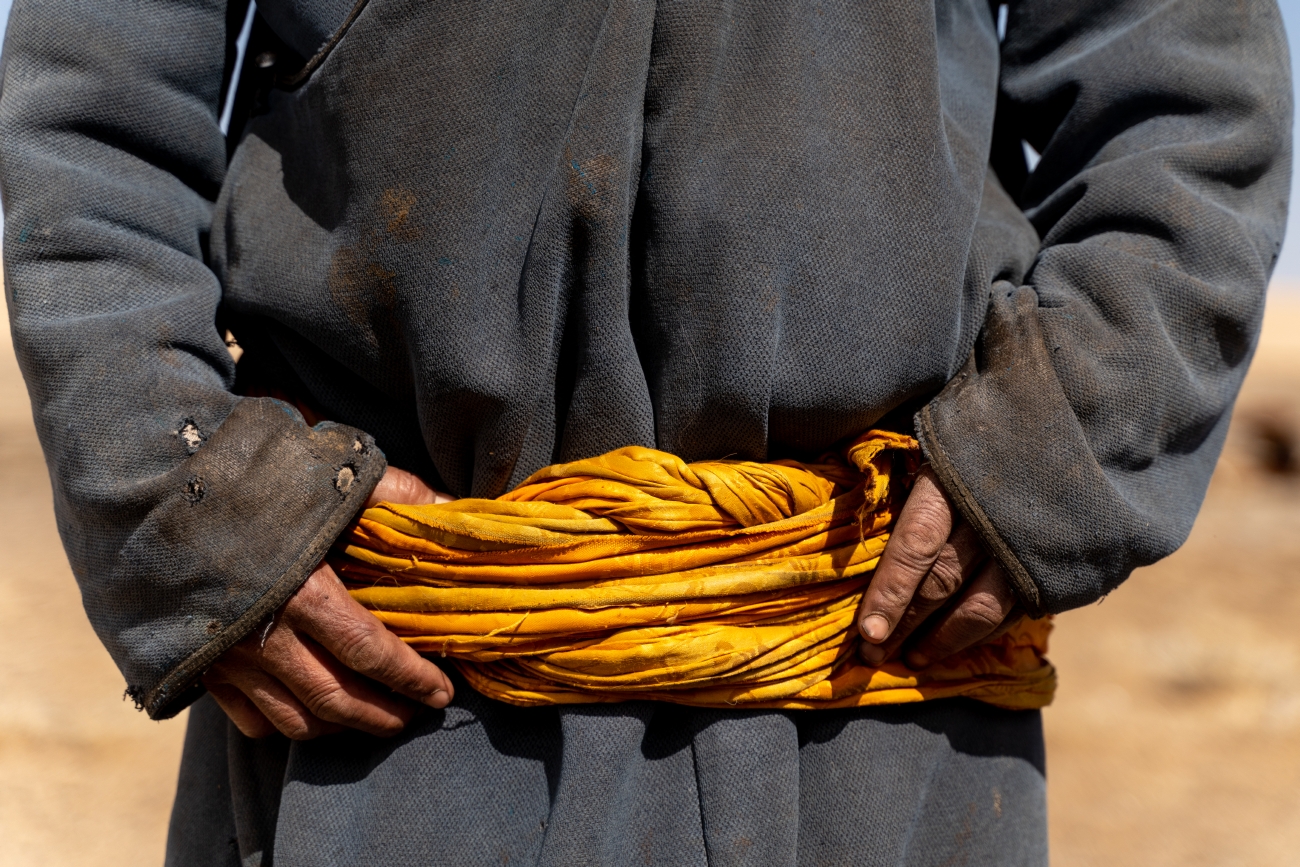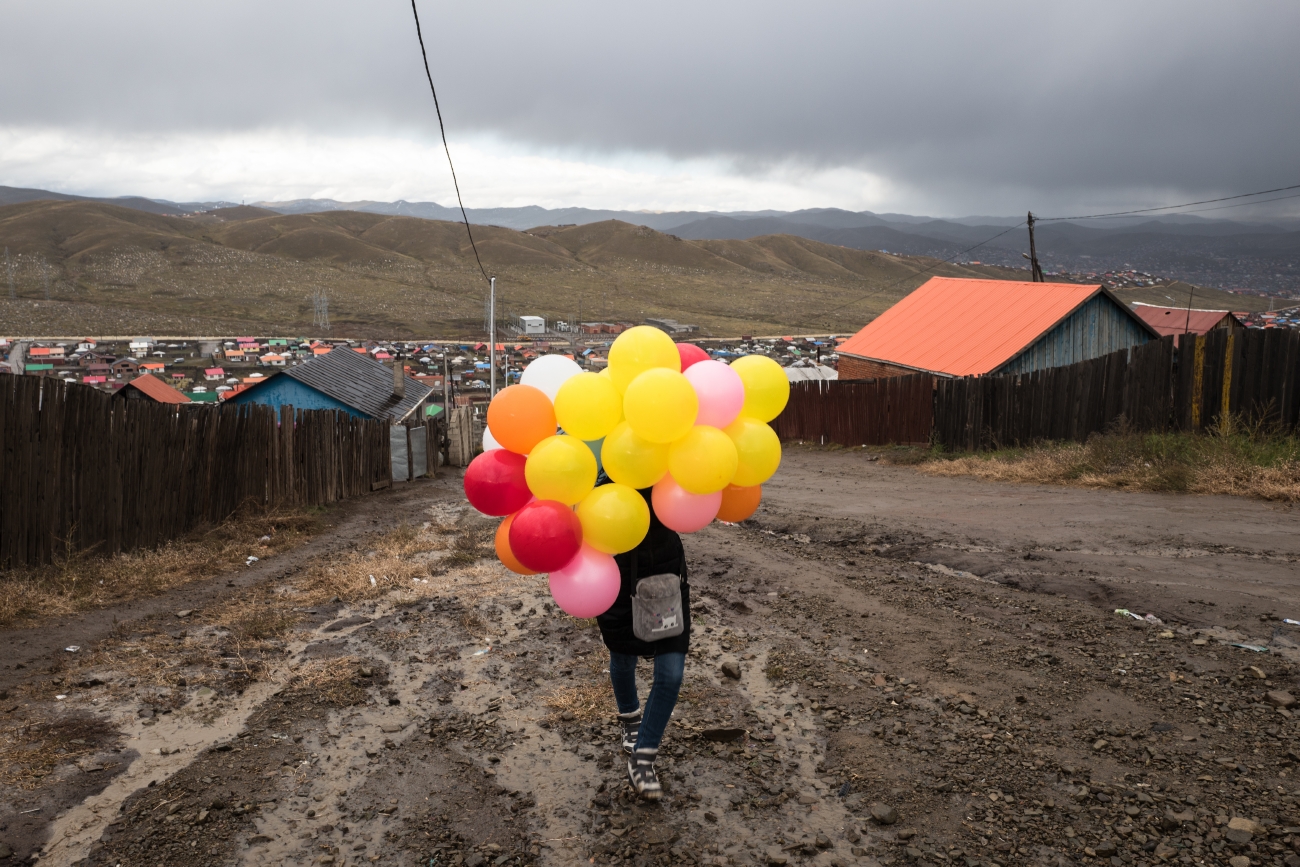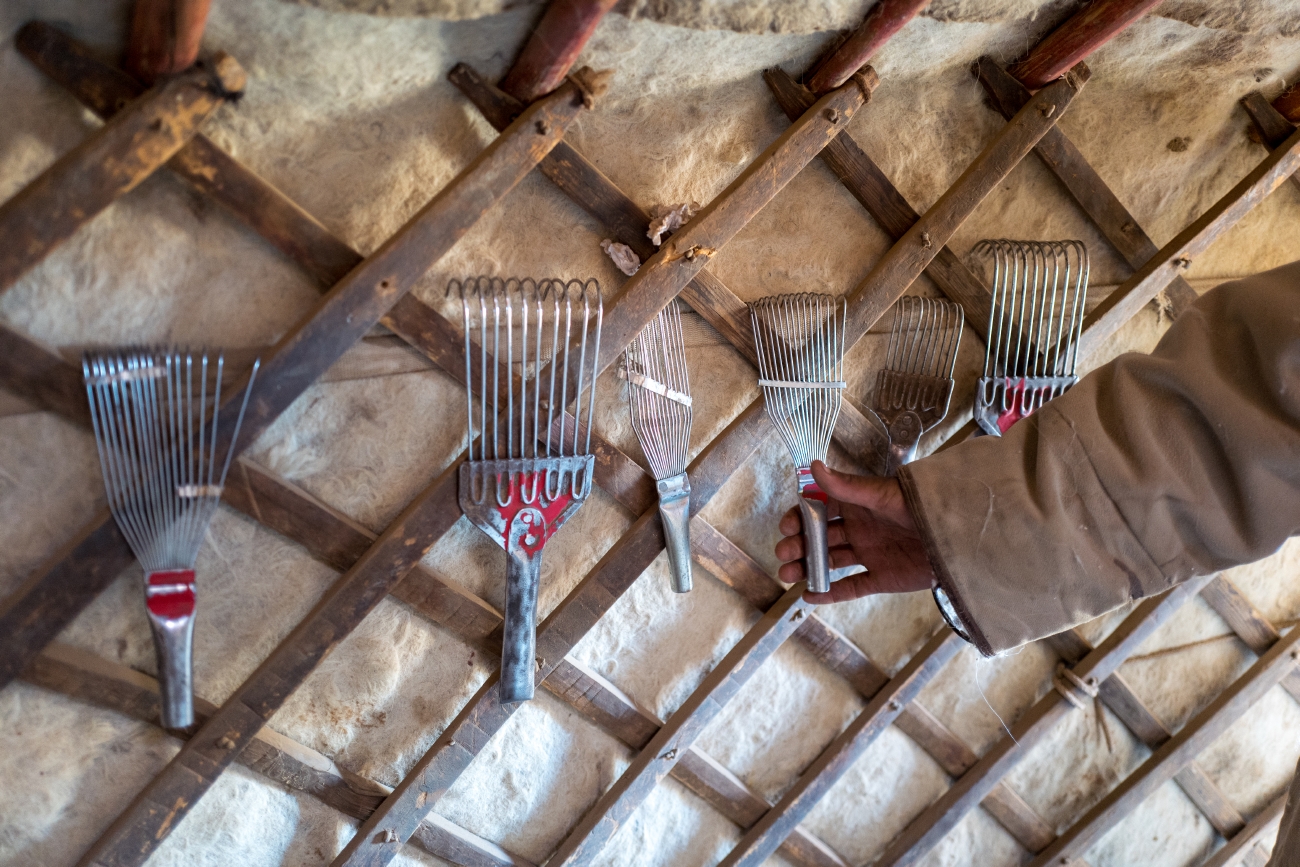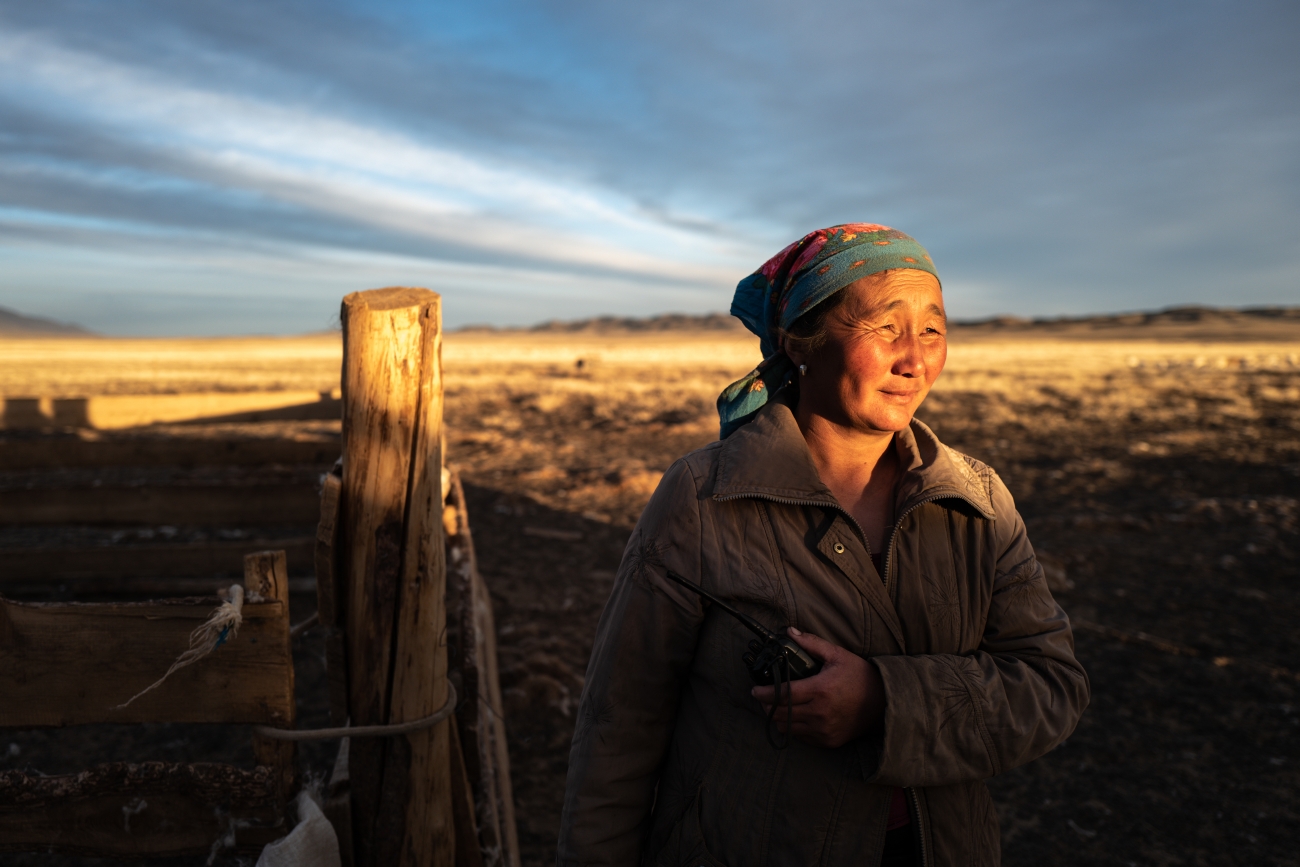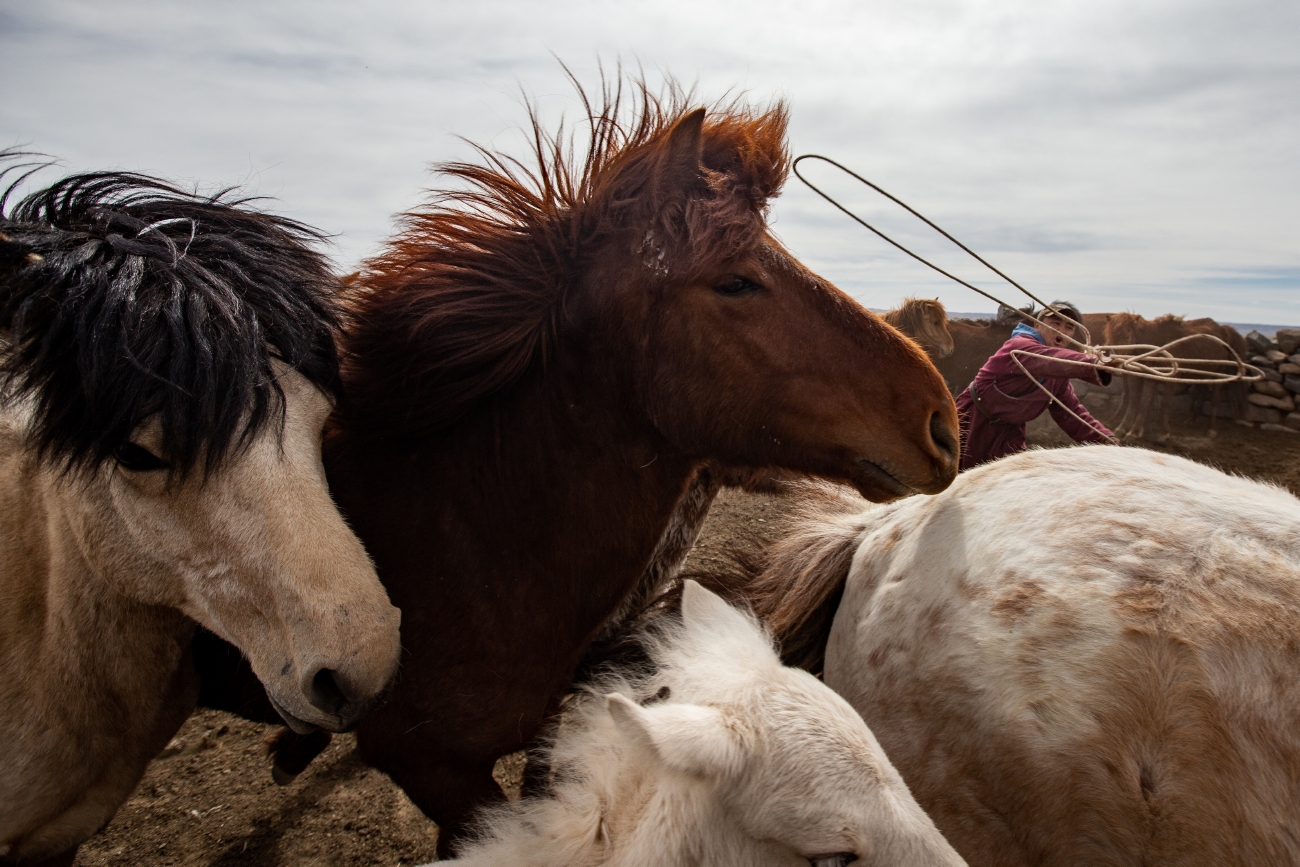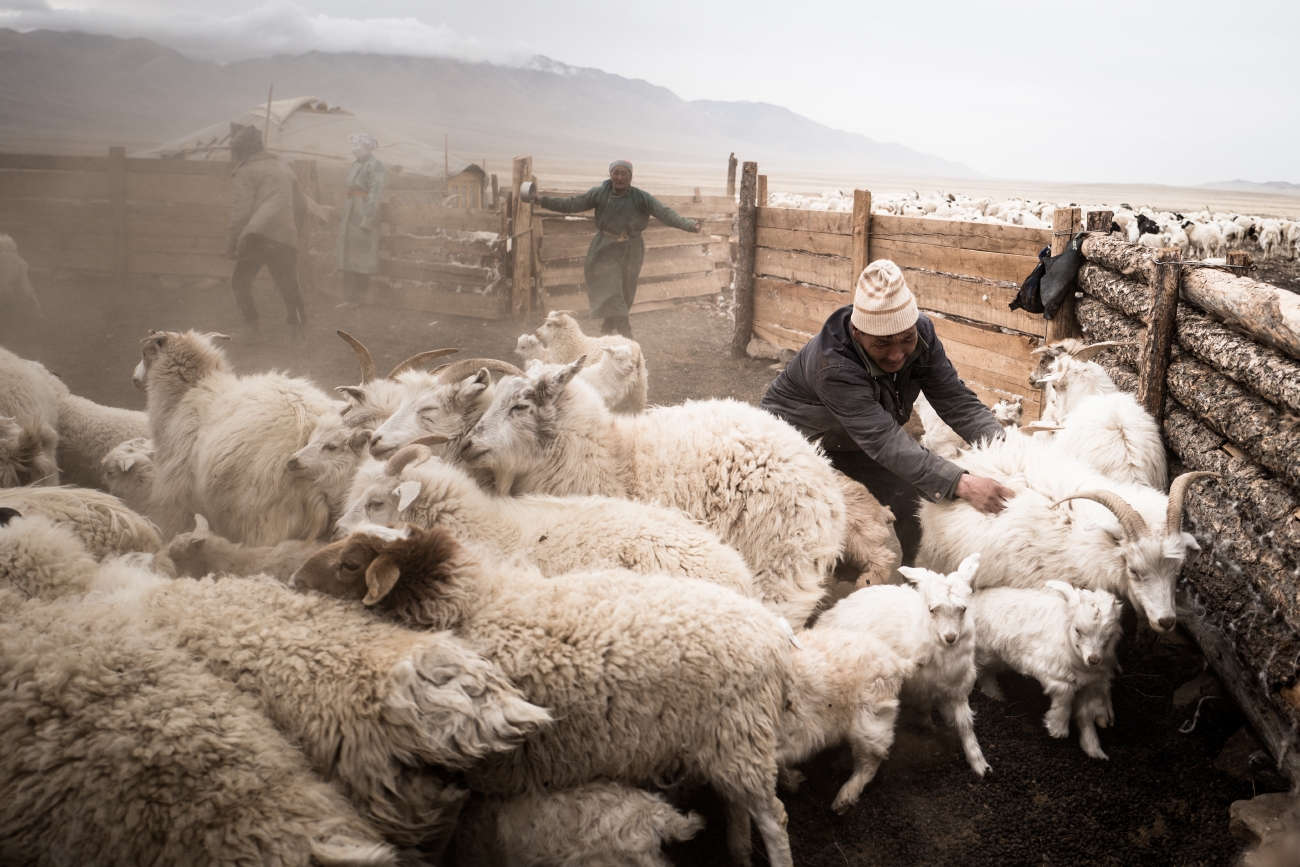The High Price of Cashmere
The dramatic impact of goats on Mongolia’s economy
Photo by Beniamino Pisati
In winter frosts decimate livestock and in summer the heat causes inexorable damage to the grasslands. If we’re looking for a nation where the effects of climate change are already a dramatic reality, it is Mongolia. In this land of nomads one of the only sources of income is pastoralism and the sale of cashmere; the quality of the country’s production, in fact, is considered to be one of the best in the world. Here, over the last seventy years the average temperature has increased by more than 2 degrees, double the global average. This has caused devastating effects on the environment and, consequently, on the millennia-old nomadic culture of the Mongolian population. Blame cannot solely be assigned to the
climate, however. In recent decades livestock numbers in Mongolia – mainly composed of sheep and goats – have grown from a few million to approximately 70 million, placing immeasurable stress on the land and making it increasingly difficult for vegetation to regenerate. As a result, families have been left little choice but to abandon the nomadic life in the country and migrate to the nation’s only city, the chaotic Ulan Bator. The capital, in fact, has seen its population triple in the last thirty years and a large number of these new arrivals live in squalid tented accommodation on the outskirts.
(2019)
The Mongolian government is trying to tackle the problem and attempt to make the nomadic lifestyle sustainable by placing restrictions on pastures to allow the land to regenerate. However, the demand for cashmere is high. It is the country’s second-largest source of revenue after the mineral sector and is particularly dependent on neighbouring China, the destination for eight of every ten tonnes of raw cashmere Mongolia produces.
